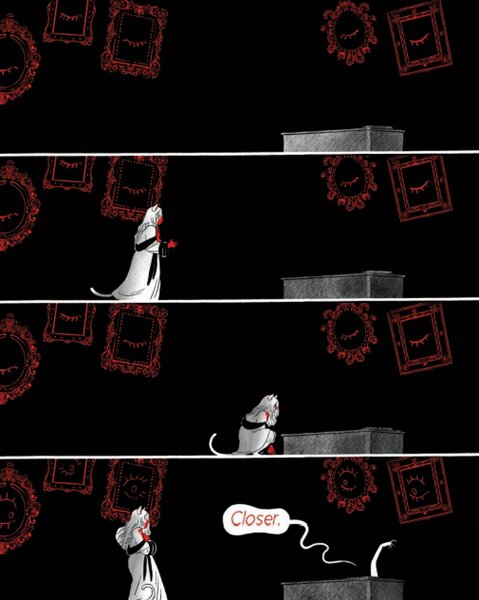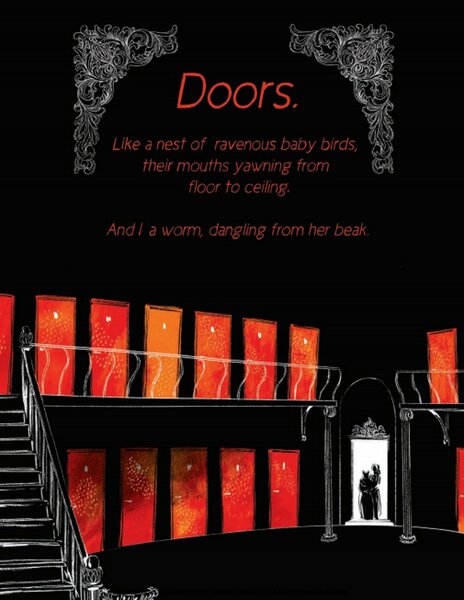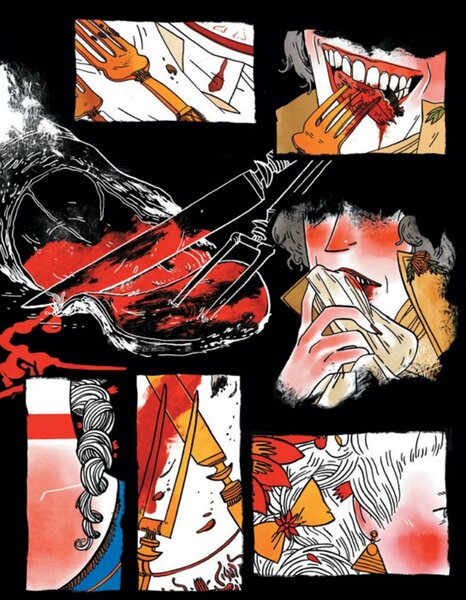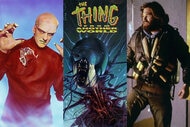Create a free profile to get unlimited access to exclusive videos, sweepstakes, and more!
Emily Carroll's macabre fairy tales are horror classics in the making
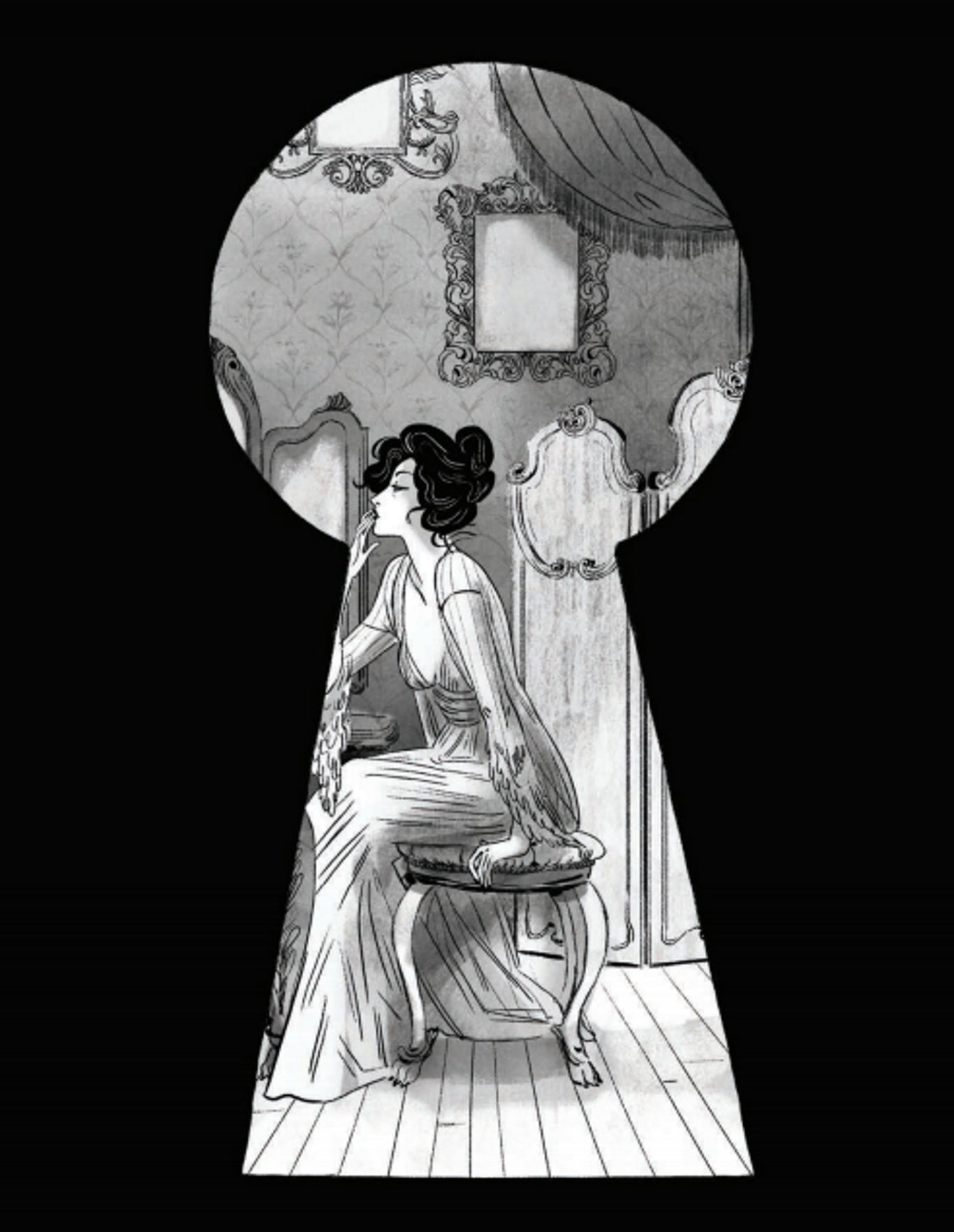
Emily Carroll's 2013 anthology Through the Woods is widely considered one of the essential classics of modern horror comics. Breathtaking art, unique stylistic choices and morbid narration combine to bring us macabre fairy tales that seem new and old all at once.
No one in horror comics has created works that look or feel quite like Carroll’s. While they could easily coast on sheer stylism, the depth in the stories is significant — it is the blend of ancient, human-shaped monsters, melancholy narration, and stunning visual choices that brings us some of the most chilling horror stories of any era.
Carroll has had an interesting career, from illustrating comic-style interpretations of Neko Case songs to video game design to the illustration of the fascinating Baba Yaga's Assistant by Marika McCoola, as well as the adaptation of the 1999 novel Speak by Laurie Halse Anderson. Yet she is perhaps best known for her short horror comics, which almost always focus on enigmatic characters hiding something monstrous just beneath seemingly calm surfaces.
On her website, many of Carroll's stand-alone stories are still available to read. This includes some of her best work, such as 2013's Out of Skin. It begins when a woman finds several rotting corpses in the woods after a rainstorm, after which she becomes haunted by their collective presence. The gray, black, and white tones are eased by mild pastels and broken up by shocking splashes of red, setting a subtly visceral mood for the tale. In the end, the story isn’t so much about the ghosts that surround the focal character as it is about the long term effects of aging and loneliness, but it is the ghosts that give us a visual definition for these ideas.
Other short stories include The Hole the Fox Did Make, a tale of a young person named Regan with a weary, overworked mother. Regan wanders near a forbidden creek at the behest of a fox-human hybrid who tells her that her father is the Prince of Foxes, drawing Regan into a fantasy world which she may not escape. Meanwhile, The Worthington presents readers with a choice of doors, and behind each, there is a short vignette. This is a tool utilized superbly in Carroll's later work When I Arrived at the Castle — choose-your-own-adventure set-ups that allow short, seemingly unrelated stories to intersect into a puzzling whole.
Through the Woods collects five short stories along with a short prologue and epilogue to help tie the themes of the book together. In Our Neighbor’s House, a young, orphaned girl wakes each morning to find another one of her sisters has disappeared until only she is left. In A Lady’s Hands Are Cold, a young wife discovers the body of her husband’s previous wife in fragments, pulling them together on his bed, becoming haunted, even possessed by her ghost. In His Face All Red, a man kills his brother out of jealousy only to see him return to life with no mention of the death. My Friend Janna introduces us to the friend of a fake medium, who discovers that she can see ghosts even if her friend is a fraud, and The Nesting Place shows the troubled reconciliation of a sister with her brother and his new, mysterious young bride.
These stories all encapsulate much of Carroll’s trademarks — people who are not what they seem to be, duplicity, fragmented storytelling, the monster in the mirror and a foreboding sense of isolation even for characters that are surrounded by other people. All of this ties together with the title of the book, Through the Woods, recalling countless cautionary tales not to wander too far away from the path. No modern horror library is complete without this addition.
The thematic follow-up to this collection is the short story, Beneath the Dead Oak Tree, which tells the tale of a young woman seemingly seduced by a frivolous playboy. Through lyrical, rhyming narration, we watch the woman, apparently a victim-in-waiting, as she defies societal expectations at every turn, ultimately revealing her own terrible nature.
When I Arrived at the Castle was widely acclaimed, named one of the best books of 2019 by several critics. As with many of Carroll’s stories, this is based in an ancient trope: the elegant woman who lives alone in an isolated mansion, pulling in stray victims from neighboring towns. A woman comes to kill her for her crimes and is led through a horror show of myriad fables after she is trapped in a great hall of doors and forced to choose one after the other. Told in black, white, and red, with a sense of relish for old lesbian vampire and haunted house tropes, When I Arrived at the Castle manages to tread familiar ground by breaking through it entirely. As always, a key to Carroll’s work lies in revealing an equally chilling tendency towards monstrosity in the protagonist as in the antagonist. While her previous works are easily masterpieces in and of themselves, this story is perhaps the one that most clearly defines the many pre-existing themes — hidden monsters, short, dreamlike interludes, isolation, and scenery that interacts with the story as if it is itself a character.
Countless creators have worked to bring us epic works of horror fiction over the decades, but in that canon, Carroll’s work still stands out as being scary, upsetting, haunting, and, most of all, incredibly self-reflective. Perhaps more than anything, Carroll creates protagonists which are to be believed; even when these characters doubt themselves, the reader never does. The face-value acceptance of a terrible, unfathomable world of dreams and nightmares behind every seemingly normal human interaction places readers immediately out of our depth, trying to return to a normalcy that grows ever more distant with each turn of the page. Even in their most outlandish moments, there is a sense of the terrible, unspoken truths of our lives at the heart of these stories, which is partially why they will continue to attract readers all across the globe.
